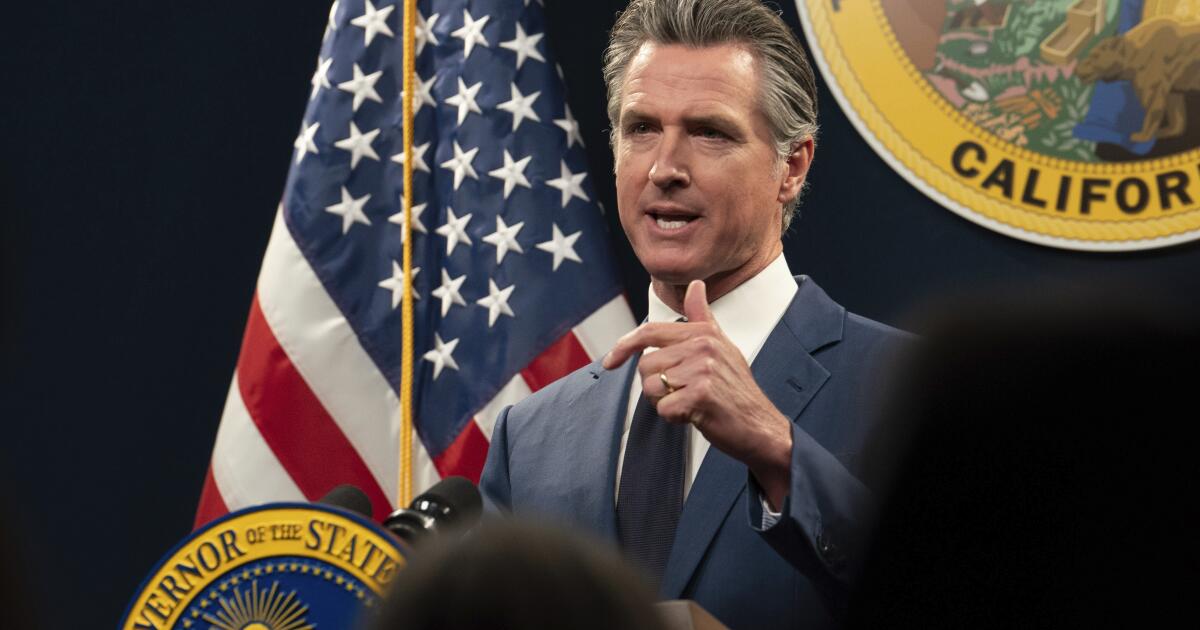Introduction to the State of the State Address
Gov. Gavin Newsom used his written State of the State address to cast California as a bulwark against a menacing Trump administration he accused of dismantling public services, flouting the rule of law and using extortion to bully businesses and universities. The remarks came as Newsom’s national profile has grown and given him a broader political stage, even as he skipped the literal one — opting to send his speech to lawmakers in writing rather than deliver it from the Assembly rostrum, which is customary.
California Under Siege
His address painted a portrait of a state under siege by the federal government even as it grapples with the aftermath of the devastating Los Angeles County fires, spiraling housing costs and an uneven economic recovery. While he framed Trump and his allies as the chief obstacle to progress, he leaned on familiar themes of California’s resilience, pointing to disaster response, investments in schools and clean energy and the state’s economic staying power. He said as California celebrates the 175th anniversary of statehood, “the state of the state is strong, fully committed to defending democracy, and resolved to never bend.”
Newsom’s Unconventional Approach
The written address marks the fifth year in a row that Newsom has diverged from the decades-old tradition of the governor delivering the annual address in person to lawmakers at the state Capitol. His unconventional approach has drawn some criticism, particularly by Republicans who previously characterized it as an example of Newsom lacking respect for the institution. California’s Constitution only requires that the State of the State be submitted as a written letter to the Legislature, which was how governors up until roughly the 1960s fulfilled their duty.
Criticisms and Challenges
But Newsom’s record has also drawn sharp criticism. After nearly two terms, California continues to wrestle with entrenched homelessness, soaring housing costs and one of the nation’s highest costs of living. A budget deficit has swelled in part because the governor expanded Medi-Cal healthcare coverage to include all income-eligible undocumented immigrants. And his move to undercut Texas lawmakers who redrew legislative maps to add additional Republican seats in Congress by asking California voters to do the same to add Democrats has fueled charges that he is accelerating a national wave of partisan gerrymandering and energizing state Republicans.
Response to Criticisms
Newsom said California showed the country its resilient spirit in January during the deadly wind-driven wildfires that destroyed thousands of homes and forced mass evacuations in Los Angeles County. Newsom credited emergency responders who put their lives at risk saving trapped residents. He glossed over criticisms that pre-deployed fire engines were inadequate, evacuation alerts were delayed and elderly and disabled residents were left stranded. Instead, he focused on the “historic speed and scale” for which federal, state and local officials responded.
Commitment to Progress
Through executive orders waiving red tape, the state paved the way for debris-removal crews to move quickly through damaged areas and streamlined permits to speed rebuilding, Newsom wrote. “Homes are now rising.” While California looked to the Trump administration for help, Newsom said the state has found none. “Even as fires still burned, the newly elected President began targeting our state — testing our resolve with his relentless, unhinged California obsession,” Newsom wrote.
Conclusion
In conclusion, Newsom’s State of the State address highlights the challenges California faces, from the devastating Los Angeles County fires to the soaring housing costs and uneven economic recovery. Despite these challenges, Newsom remains committed to defending democracy and promoting progress in the state. He has pledged to continue investing in schools, clean energy, and disaster response, and to protect the state’s liberal values from attacks by the Trump administration.
FAQs
Q: What was the main theme of Newsom’s State of the State address?
A: The main theme of Newsom’s address was that California is under siege by the federal government, but remains strong and committed to defending democracy and promoting progress.
Q: What are some of the challenges California is facing, according to Newsom?
A: California is facing challenges such as devastating wildfires, soaring housing costs, and an uneven economic recovery.
Q: How has Newsom’s approach to the State of the State address been received?
A: Newsom’s unconventional approach to the State of the State address has drawn some criticism, particularly from Republicans who feel that he is lacking respect for the institution.
Q: What is Newsom’s plan for addressing the state’s budget deficit?
A: Newsom’s plan for addressing the state’s budget deficit is not explicitly stated in the address, but he has expanded Medi-Cal healthcare coverage to include all income-eligible undocumented immigrants, which has contributed to the deficit.
Q: How does Newsom respond to criticisms of his handling of the Los Angeles County fires?
A: Newsom responds to criticisms of his handling of the Los Angeles County fires by focusing on the “historic speed and scale” of the federal, state, and local response to the disaster, and by crediting emergency responders for their bravery and selflessness.


